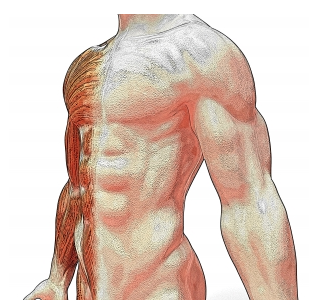 Fibromyalgia is a health condition that causes pain and fatigue in the muscles. People with this condition have ‘tender points’ on parts of the body, such as the neck, back, shoulders, hips, legs and arms. These tender points hurt when you put pressure on them.
Fibromyalgia is a health condition that causes pain and fatigue in the muscles. People with this condition have ‘tender points’ on parts of the body, such as the neck, back, shoulders, hips, legs and arms. These tender points hurt when you put pressure on them.
Those who have fibromyalgia can also experience other symptoms, including:
• Headaches
• Trouble sleeping
• Morning stiffness
• Painful menstrual periods
• Numbness or tingling in feet and hands
• Problems with memory and thinking (sometimes known as ‘fibro fog’)
One may have a few preexisting chronic pain conditions, such as:
• Chronic fatigue syndrome
• Inflammatory bowel disease
• Fibromyalgia
• Endometriosis
• Interstitial cystitis
• Vulvodynia
• Temporomandibular joint dysfunction.
It isn’t known whether these conditions have a common cause.
Causes of fibromyalgia
The causes of this condition are unknown. However, there may be several factors involved, including:
• Repetitive injuries
• Traumatic or stressful events, like car accidents
• Certain diseases
• Illness
The condition can also appear on its own. Some scientists argue that genetics might cause the disorder.
Who’s affected by fibromyalgia?
It’s estimated that fibromyalgia affects millions of people around the world. About 80-90% of people with this condition are women. However, it can also affect men and children. Most of those diagnosed with the condition are middle aged.
People with other specific conditions can be more likely to have it. These conditions may include:
• Rheumatoid arthritis
• Lupus (systemic lupus erythematosus)
• Spinal arthritis (ankylosing spondylitis)
A woman whose family member has fibromyalgia is also more likely to suffer from the condition.
Symptoms of fibromyalgia
This condition is characterized by extensive muscle pain, which causes several other symptoms. First, lab tests rarely detect the condition and results often leave you feeling like a hypochondriac. You can diagnose the problem by pressing on your tender points, but this will still not explain all your symptoms.
People with this condition often have symptoms similar to flu-like infections that don’t go away. It leaves them exhausted and incapable of thinking or finding the right words (fibro fog symptoms). With fibromyalgia, you can have difficulties sleeping and wake up achy and stiff. Your symptoms may be unbearable and you may feel as though you can’t do anything without pushing yourself.
Some of the most common symptoms include:
• Pain all over
• Sleep difficulties
• Fatigue
• Morning stiffness
• Brain fog
• Muscle knots, weakness and cramping
• Headaches/migraines
• Digestive disorders
• Itchy/burning skin
• Balance problems
How is it prevented?
About 5% of people around the world suffer from fibromyalgia. There’s still no known cause of this condition. As stress is thought to be one of the major causes, managing it is important for controlling the condition.
Ways to reduce stress include performing deep breathing exercises, listening to some soft music, or meditation. Yoga is also good for preventing this condition. It will relax your mind and reduce sensitivity to pain.
Exercise and fibromyalgia are closely linked. Moderate workouts increase circulation, increasing muscle strength, and promoting sound sleep. Exercises produce endorphins (natural pain killers) in the body. A massage with essential oils also soothes and prevents flare-ups.
Other things like a healthy weight, a healthy diet, and getting enough rest and sleep are also helpful.
Eliminating processed foods that contain artificial preservatives and colors is also beneficial. You must also avoid refined sugars and include fruits, vegetables, beans, whole grains, and nuts in your diet. It’s also important to avoid drinking and smoking to prevent the condition.
Lastly, as difficult as it sounds, it’s important to not let fibromyalgia control your life so you can stay well and avoid flares. Find an activity that you enjoy a lot, such as reading, cultivating your garden, caring for your pets, etc. This will help you forget your condition and ease your symptoms.

